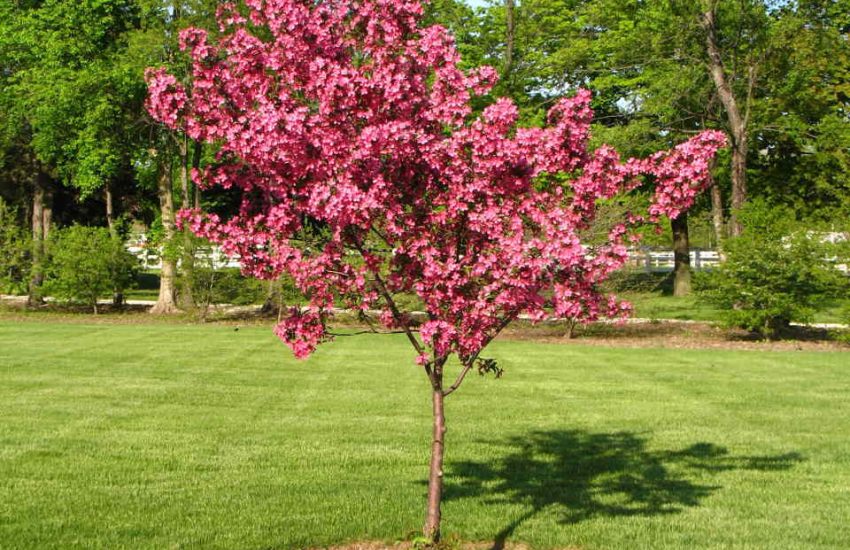Marigolds: Annual or Perennial? A Guide to Understanding the Lifespan of Your Favorite Flowers
Marigolds are a popular choice for gardeners due to their bright colors and easy maintenance. However, there is some confusion about whether marigolds are annual or perennial plants. The answer to this question depends on the specific type of marigold being grown.

French marigolds and African marigolds are both annual plants, meaning they complete their life cycle within one growing season. These types of marigolds will need to be replanted each year. However, there are also perennial marigolds, such as Mexican marigolds and signet marigolds, which will come back year after year with proper care.
Understanding the differences between annual and perennial marigolds is important for gardeners who want to plan their gardens and landscaping. By choosing the right type of marigold for their needs, gardeners can ensure a beautiful and low-maintenance addition to their outdoor spaces.
Marigold Basics

Definition and Origin
Marigolds are a popular type of flower that belongs to the genus Tagetes in the family Asteraceae. They are known for their bright, vibrant colors and distinct scent. Marigolds are native to North and South America, and have been cultivated for thousands of years.
The name “marigold” comes from the Virgin Mary, as the flower was often used in religious ceremonies. Marigolds were also used by the Aztecs for medicinal purposes and as a dye.
Species Overview
There are two main species of marigolds: Tagetes erecta and Tagetes patula. Tagetes erecta, also known as African marigold, is a tall, upright plant that can grow up to three feet tall. It has large, round flowers in shades of yellow, orange, and red. Tagetes patula, also known as French marigold, is a smaller plant that grows up to one foot tall. It has smaller, daisy-like flowers in shades of yellow, orange, and red.
Marigolds are typically grown as annuals, meaning they complete their life cycle in one growing season. However, some varieties can be grown as perennials in warmer climates. Marigolds are easy to grow and care for, making them a popular choice for home gardeners and landscapers.
In conclusion, marigolds are a beautiful and versatile flower that can add color and fragrance to any garden. Whether grown as annuals or perennials, they are easy to grow and care for, making them a popular choice for gardeners of all skill levels.
Classification

Marigolds are a genus of flowering plants in the family Asteraceae. They are classified as either annual or perennial, depending on their life cycle.
Annual Marigolds
Annual marigolds complete their life cycle in one growing season. They grow quickly and flower profusely, making them a popular choice for gardeners who want a burst of color in their gardens. Common annual marigold species include Tagetes erecta (African marigold), Tagetes patula (French marigold), and Tagetes tenuifolia (signet marigold).
Perennial Marigolds
Perennial marigolds, on the other hand, live for multiple growing seasons. They may die back to the ground in the winter, but they will regrow from their roots in the spring. Perennial marigolds are less common in gardens than their annual counterparts, but they can be a good choice for gardeners who want a low-maintenance plant that will come back year after year. The most common perennial marigold species is Tagetes lucida (Mexican mint marigold).
Marigolds are typically classified based on their life cycle, rather than whether they are an annual or perennial plant. However, it is worth noting that annual plants tend to have a shorter lifespan than perennial plants. Annual marigolds, for example, will only live for one growing season before they die off, while perennial marigolds can live for many years.
In conclusion, marigolds can be classified as either annual or perennial, depending on their life cycle. Annual marigolds complete their life cycle in one growing season, while perennial marigolds live for multiple growing seasons. Gardeners can choose between these two types of marigolds depending on their preferences and gardening goals.
Cultivation
Marigolds are easy-to-grow flowers that can be grown either as annuals or perennials depending on the variety. In this section, we will cover the cultivation requirements for marigolds, including soil requirements, sunlight and temperature, watering and fertilization, planting and propagation.
Soil Requirements
Marigolds prefer well-draining soil that is rich in organic matter. They can tolerate a wide range of soil pH levels, but they prefer slightly acidic soil with a pH between 6.0 and 7.0. Before planting, it is recommended to amend the soil with compost or other organic matter to improve soil structure and fertility.
Sunlight and Temperature
Marigolds thrive in full sun, which means they require at least six hours of direct sunlight per day. They can tolerate a wide range of temperatures, but they prefer warm weather and can be damaged by frost. It is best to plant marigolds after the last frost in the spring.
Watering and Fertilization
Marigolds require regular watering, especially during hot and dry weather. It is important not to overwater them, as this can lead to root rot. Fertilization is also important for healthy growth and blooms. A balanced fertilizer with a higher phosphorus content is recommended for promoting flower production.
Planting and Propagation
Marigolds can be grown from seeds or cuttings. Seeds should be sown directly in the garden after the last frost in the spring. They can also be started indoors 4-6 weeks before the last frost and then transplanted outdoors. Cuttings can be taken from established plants and rooted in moist soil. Marigolds can also self-seed, which means they can come back year after year if allowed to drop their seeds.
Overall, marigolds are a low-maintenance flower that can add vibrant color to any garden. By following the above cultivation requirements, gardeners can enjoy beautiful blooms throughout the growing season.
Varieties of Marigolds
Marigolds are available in various colors and sizes, and they can be categorized into three main types: African, French, and Signet. Apart from these, there are several other varieties of marigolds as well.
African Marigolds
African marigolds (Tagetes erecta) are the largest among the marigold family, and they can grow up to 3 feet tall. They have large, pom-pom-like flowers that come in shades of yellow, orange, and red. African marigolds are annuals and are commonly used in gardens and landscapes for their vibrant colors and long-lasting blooms.
French Marigolds
French marigolds (Tagetes patula) are smaller than African marigolds, and they grow up to 1 foot tall. They have smaller flowers that come in shades of yellow, orange, and red, often with a dark center. French marigolds are annuals and are commonly used in borders, containers, and as edging plants.
Signet Marigolds
Signet marigolds (Tagetes tenuifolia) are the smallest among the marigold family, and they grow up to 1 foot tall. They have small, dainty flowers that come in shades of yellow and orange. Signet marigolds are annuals and are commonly used in borders, rock gardens, and as edging plants.
Other Varieties
Apart from the three main types, there are several other varieties of marigolds as well, including:
Triploid Marigolds: These marigolds are a cross between African and French marigolds, and they have large, double flowers that come in shades of yellow, orange, and red.
Inca Marigolds: These marigolds have large, double flowers that come in shades of yellow, orange, and red, often with a dark center. They are commonly used in gardens and landscapes.
Lemon Gem Marigolds: These marigolds have small, lemon-yellow flowers and are commonly used in borders and containers.
Overall, marigolds are easy to grow and care for, and they add a pop of color to any garden or landscape. With so many varieties to choose from, there is a marigold for every gardener’s taste and preference.
Growth and Care

Marigolds are easy to grow and care for, making them a popular choice for gardeners. They can be grown as either annuals or perennials, depending on the variety. In this section, we will discuss the growth and care of marigolds and provide tips on how to keep them healthy.
Deadheading and Pruning
Deadheading is the process of removing spent flowers from the plant. This encourages the plant to produce more flowers and can help prolong the blooming period. Marigolds should be deadheaded regularly throughout the growing season. To deadhead marigolds, simply pinch off the spent flower heads with your fingers or use a pair of sharp scissors.
Pruning is another important part of marigold care. Pruning can help control the size and shape of the plant and can also help prevent disease. Prune marigolds in the spring, just as new growth is starting to appear. Remove any dead or damaged branches, as well as any branches that are crossing or rubbing against each other.
Pests and Diseases
Marigolds are generally resistant to pests and diseases, but they can still be affected by a few common problems. Nematodes are a type of worm that can attack the roots of marigolds, causing stunted growth and yellowing leaves. To prevent nematode infestations, rotate your crops and avoid planting marigolds in the same spot year after year.
Another common problem for marigolds is powdery mildew, a fungal disease that causes a white, powdery coating on the leaves. To prevent powdery mildew, make sure your marigolds are planted in a location with good air circulation and avoid overhead watering.
Companion Planting
Marigolds are often used as companion plants in the garden. They are believed to repel certain pests, such as aphids and whiteflies, and can also attract beneficial insects, such as ladybugs and lacewings. Marigolds are often planted alongside vegetables, such as tomatoes and peppers, to help protect them from pests.
In conclusion, marigolds are easy to grow and care for, making them a great choice for gardeners of all skill levels. By deadheading and pruning regularly, preventing pests and diseases, and using them as companion plants, you can keep your marigolds healthy and beautiful all season long.
Marigolds in the Garden

Marigolds are a popular choice for gardeners due to their vibrant colors, easy care, and versatility. Whether you’re looking to add a pop of color to your garden, grow them in containers, or use them for companion planting, marigolds are a great choice.
Landscape Uses
Marigolds are a great addition to any garden bed or border. They bloom in the summer and come in a variety of colors, including yellow, orange, and red. Their bright colors make them a popular choice for adding a splash of color to any landscape.
Container Gardening
Marigolds are also a great choice for container gardening. They do well in pots and can be used to add color to patios, balconies, and other small spaces. They are easy to care for and can even be grown indoors if given enough light.
Benefits for Vegetables and Herbs
Marigolds are also beneficial for vegetable and herb gardens. They are known to repel pests such as nematodes and whiteflies, making them a great companion plant for tomatoes, peppers, and other vegetables. They also attract beneficial insects such as ladybugs and lacewings, which can help control pests naturally.
Overall, marigolds are a versatile and easy-to-grow plant that can add color and benefit to any garden or landscape.
Environmental Adaptations

Climate Tolerance
Marigolds are a hardy plant that can tolerate a wide range of climates. They are native to Mexico and Central America, but have been introduced to many parts of the world. They can grow in hot, dry climates as well as in cooler, wetter climates. Marigolds are known to be heat-tolerant and can withstand high temperatures and drought conditions. They are also able to grow in areas with poor soil quality, making them a popular choice for gardeners.
Marigolds can grow in USDA hardiness zones 2 through 11, which means they can survive in a variety of climates. However, they prefer warmer temperatures and do best in zones 9 through 11. In cooler climates, marigolds can be grown as annuals, while in warmer climates they can be grown as perennials.
Self-Seeding Behavior
Marigolds are known for their self-seeding behavior, which means they can drop their own seeds and grow new plants without any help from a gardener. This makes them a popular choice for gardeners who want a low-maintenance plant. Marigolds can self-seed in both annual and perennial varieties.
Marigolds will typically self-seed in the fall, after the flowers have bloomed and the seeds have matured. The seeds will drop to the ground and germinate in the spring, creating new plants. However, gardeners should be aware that self-seeding can sometimes lead to overcrowding and competition for resources, so it is important to thin out the plants as needed to maintain healthy growth.
Overall, marigolds are a versatile and hardy plant that can adapt to a variety of environmental conditions. Their ability to self-seed makes them a popular choice for gardeners who want a low-maintenance plant that will come back year after year.
Aesthetic Appeal

Marigolds are popular for their aesthetic appeal, making them a common choice for gardens and landscapes. They come in a variety of colors, including gold, red, yellow, and orange, with some varieties featuring a mix of these colors.
Color Palette
Marigolds are known for their bright and vibrant hues, adding a pop of color to any garden. The bright yellow and orange flowers are particularly eye-catching and can be used to create stunning visual displays. Additionally, the range of colors available makes it easy to find a marigold that complements any color scheme.
Scent and Attractiveness to Pollinators
In addition to their visual appeal, marigolds also have a distinct scent that can be pleasant to some and off-putting to others. The scent is said to repel certain pests, making them a popular choice for organic gardeners.
Marigolds are also attractive to pollinators such as bees and butterflies, making them a great addition to any pollinator garden. The scent of marigolds can even help attract these beneficial insects to the garden.
Overall, marigolds are a versatile and attractive choice for any garden or landscape. With their range of colors and unique scent, they are sure to add a touch of beauty to any outdoor space.
Frequently Asked Questions

Can marigolds be eaten and are they safe for consumption?
Marigolds are not commonly consumed by humans, but some varieties are edible and used in cooking. However, it is important to note that not all marigolds are safe for consumption. It is recommended to only consume marigolds that are specifically labeled as edible.
What variety of colors do marigolds come in?
Marigolds come in a wide variety of colors, including yellow, gold, orange, red, and bi-color combinations. Some varieties may even have variegated petals with multiple colors.
How should marigolds be cared for after the growing season ends?
After the growing season ends, marigolds should be cut back to about 2-3 inches above the soil line. The remaining plant material can be left in the garden to decompose or removed and composted. It is also important to remove any dead or diseased plant material to prevent the spread of disease.
What are the differences between African marigolds and other types?
African marigolds, also known as Tagetes erecta, are typically larger and taller than other marigold varieties. They also have larger blooms and come in a wider range of colors. French marigolds (Tagetes patula) and signet marigolds (Tagetes tenuifolia) are smaller in size and have smaller blooms.
How do marigolds fare during the winter months?
Marigolds are typically grown as annuals and do not survive cold winter temperatures. However, in warmer climates, marigolds may survive as perennials and continue to bloom for multiple seasons.
What are the sunlight requirements for growing healthy marigolds?
Marigolds prefer full sun exposure and require at least 6 hours of direct sunlight per day. They can tolerate some shade, but may produce fewer blooms in shady conditions. It is important to provide adequate spacing between plants to allow for proper air circulation and prevent the development of fungal diseases.


